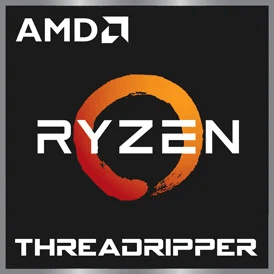Intel Core i3 12100T vs Intel Core i9 14900T
We compared two desktop CPUs: Intel Core i3 12100T with 4 cores 2.2GHz and Intel Core i9 14900T with 24 cores 1.1GHz . You will find out which processor performs better in benchmark tests, key specifications, power consumption and more.
Main Differences
Intel Core i3 12100T 's Advantages
Integrated graphics card
Higher base frequency (2.2GHz vs 1.1GHz)
Intel Core i9 14900T 's Advantages
Released 2 years late
Higher specification of memory (5600 vs 4800)
Larger memory bandwidth (89.6GB/s vs 76.8GB/s)
Larger L3 cache size (36MB vs 12MB)
Score
Benchmark
Geekbench 6 Single Core
Intel Core i3 12100T
2144
Intel Core i9 14900T
+40%
3019
Geekbench 6 Multi Core
Intel Core i3 12100T
7243
Intel Core i9 14900T
+126%
16385
General Parameters
Jan 2022
Release Date
Jan 2024
Intel
Manufacturer
Intel
Desktop
Type
Desktop
Alder Lake-S
Core Architecture
Raptor Lake-R
Intel Socket 1700
Socket
Intel Socket 1700
UHD Graphics 730
Integrated Graphics
UHD Graphics 770
Core i3 (Alder Lake-S)
Generation
Core i9 (Raptor Lake Refresh)
Package
10 nm
Manufacturing Process
10 nm
35 W
Power Consumption
35 W
Intel
Foundry
Intel
163 mm²
Die Size
257 mm²
CPU Performance
-
Performance Cores
8
-
Performance Core Threads
16
2.2 GHz
Performance Core Base Frequency
1.1 GHz
4.1 GHz
Performance Core Turbo Frequency
5.5 GHz
-
Efficiency Cores
16
-
Efficiency Core Threads
16
-
Efficiency Core Base Frequency
800 MHz
-
Efficiency Core Turbo Frequency
4 GHz
4
Total Core Count
24
8
Total Thread Count
32
100 MHz
Bus Frequency
100 MHz
22.0
Multiplier
11.0
80 KB per core
L1 Cache
80 KB per core
1.25 MB per core
L2 Cache
2 MB per core
12 MB shared
L3 Cache
36 MB shared
No
Unlocked Multiplier
No
1
SMP
1
Memory Parameters
DDR4-3200, DDR5-4800
Memory Types
DDR4-3200, DDR5-5600
2
Max Memory Channels
2
76.8 GB/s
Max Memory Bandwidth
89.6 GB/s
No
ECC Memory Support
Yes
Graphics Card Parameters
true
Integrated Graphics
-
300 MHz
GPU Base Frequency
-
1400 MHz
GPU Max Dynamic Frequency
-
192
Shader Units
-
48
Texture Units
-
24
Raster Operation Units
-
24
Execution Units
-
15 W
Power Consumption
-
0.35 TFLOPS
Graphics Performance
-







